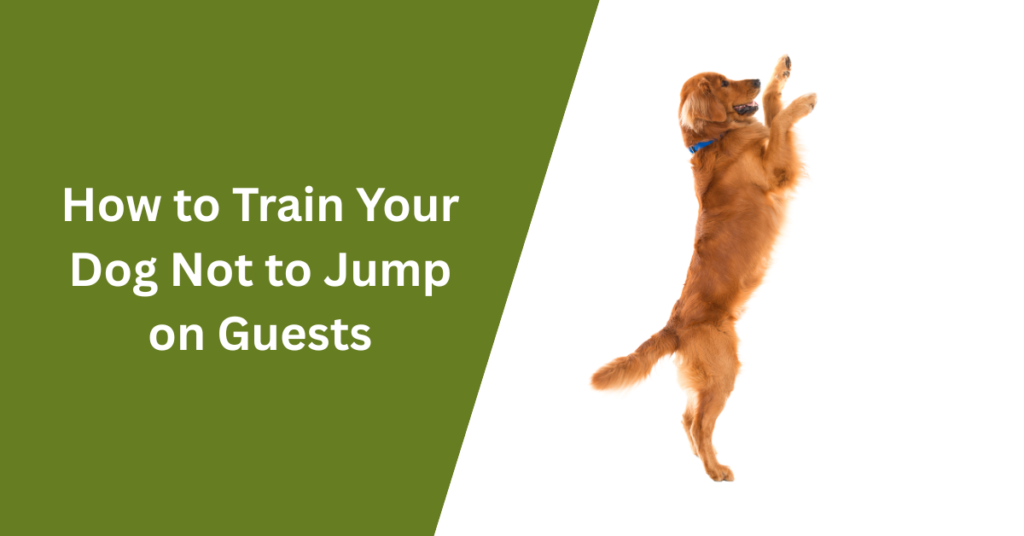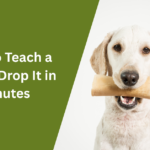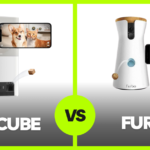Train your dog not to jump on guests by teaching calm greetings, redirecting energy, and rewarding good behavior. Use commands like “sit” before opening the door, ignore jumping to remove attention, and reward your dog only when all four paws stay on the ground. Consistency, guest participation, and controlled practice sessions ensure lasting results.
Why Dogs Jump on Guests
Natural greeting behaviors
Dogs are inherently social creatures who communicate through physical interaction. Since dogs naturally greet each other face-to-face, jumping allows them to achieve the same level of interaction with taller humans. When meeting other dogs, they typically engage at eye level, nevertheless, interacting with humans requires them to look upward to establish similar connections.
For many dogs, jumping serves multiple purposes beyond simple greetings. Some less confident dogs use jumping as a way to release stress or defuse uncomfortable situations. Additionally, playful dogs often jump when experiencing heightened excitement or overstimulation during social interactions.
Attention-seeking patterns
Dogs quickly learn that jumping guarantees human attention – even if that attention comes in the form of scolding or pushing them away. Furthermore, any reaction from humans, including negative responses like grabbing their paws or verbal corrections, can inadvertently reinforce this behavior.
Consider these common attention-seeking scenarios:
- Dogs may jump to communicate specific needs, such as hunger or the need to go outside
- Some pets steal items and run away, using the ensuing chase as a form of attention
- Certain dogs initiate jumping before attention shifts elsewhere to maintain focus on them
Most notably, dogs continue behaviors that successfully earn them rewards. When family members, visitors, or strangers respond to jumping – even through attempts to discourage it – they unintentionally strengthen this pattern. This creates a cycle where the dog learns that jumping reliably produces human interaction.
Setting Up for Success
Successful dog training begins with creating the right environment. By establishing proper training zones and using effective management tools, you can set both your dog and guests up for positive interactions.
Creating a greeting zone
First, designate a specific area near your entrance for greeting visitors. This space should be away from tight spots or narrow corridors where dogs might feel cramped or anxious. A well-planned greeting zone helps prevent your dog from becoming territorial and reduces excitement levels during arrivals.
Consider these elements when setting up your greeting zone:
- A designated spot where your dog can sit comfortably
- Enough space for visitors to enter without feeling crowded
- Clear visibility so your dog can see approaching guests
- Easy access to redirect your dog if needed
Essential training tools
Equipping yourself with the right tools makes training more effective. According to experienced trainers, environmental management tools play a crucial role in modifying unwanted behaviors. Some fundamental items include:
- Baby gates for creating physical boundaries
- Sturdy leashes for controlled interactions
- Frozen stuffed Kongs for positive reinforcement
- Exercise pens for controlled movement
- Window films to manage visual stimuli
Managing the environment
To effectively manage your training environment:
- Remove Triggers: Keep items that might excite your dog, like toys or treats, away from the greeting area. This minimizes potential distractions and helps maintain focus during training sessions.
- Create Clear Boundaries: Install baby gates or use exercise pens to establish distinct zones within your home. These physical barriers help control movement while allowing your dog to maintain visual contact with visitors.
- Establish Routine: According to senior trainers, keeping training sessions short – no more than five to ten minutes – helps maintain your dog’s interest and ensures better results. Consistency in your environmental setup reinforces desired behaviors more effectively.
- Control Visual Stimuli: Use window films or adjust blinds to manage what your dog sees outside, thereby reducing reactive behaviors toward passing people or vehicles. This helps maintain a calmer atmosphere, particularly during training sessions.
- Set Up Success Zones: Create designated areas where your dog feels secure and comfortable. These spaces serve as safe retreats during overwhelming situations and aid in building confidence.
Proper environmental management requires forethought and strategic planning. By thoughtfully arranging your dog’s surroundings, you create conditions that naturally encourage positive behaviors while minimizing opportunities for jumping and other unwanted actions.
Teaching Basic Commands First
Basic command training forms the foundation for teaching your dog polite greeting behaviors. By mastering these fundamental commands, your dog learns self-control and alternative behaviors to jumping.
Sit and stay basics
The ‘sit’ command serves as the cornerstone of proper guest greetings. Unlike temporary commands, ‘stay’ means remaining in position until explicitly released. This distinction proves crucial when training your dog not to jump on visitors.
To begin teaching stay:
- Start with a release word – common choices include “Okay,” “Free,” or “Release”
- Ask your dog to sit
- Wait one second, then calmly offer a treat
- Use your release word immediately afterward
- Encourage movement through gentle prompting
Place command fundamentals
The place command emerges as an essential tool for managing guest interactions. This versatile cue instructs your dog to “go to a designated spot and remain there until released”. Professional trainers consider it invaluable for various situations, primarily when visitors arrive.
To establish the place command:
First, select an appropriate “place”:
- A dog bed or mat with defined boundaries
- A raised platform or cot
- Even temporary options like picnic tables or benches
Begin training in low-distraction environments:
- Choose your release word first
- Guide your dog to the designated spot
- Start with brief durations
- Reward consistently while maintaining position
- Gradually increase difficulty through distractions
Step-by-Step Training Process
Transforming your dog’s jumping habits requires a systematic approach that builds upon basic obedience training. Research indicates it takes approximately three months to establish new behavior patterns in dogs, making consistency crucial throughout the training process.
Starting with family members
Begin training sessions with household members, as they provide regular opportunities for practice. Professional trainers recommend practicing 5-10 repetitions each time someone enters through the door. This consistent practice helps establish the desired behavior at locations where jumping commonly occurs.
To maximize success with family members:
- Practice 3-6 times daily
- Keep sessions brief (1-2 minutes each)
- Maintain training consistency for 3 months
- Reward desired behaviors immediately
Practicing with familiar visitors
After a week of successful practice with family members, introduce familiar visitors into the training process. Choose helpers who will follow instructions precisely and maintain training consistency.
For controlled practice sessions:
- Brief visitors on training protocols beforehand
- Keep your dog on a leash during initial interactions
- Step on the leash to prevent jumping while maintaining slack for sitting/standing
- Reward calm behavior every 30 seconds as visitors approach
A proven management technique involves using a crate during visitor arrivals. Place your dog in their crate 15-20 minutes before guests arrive, ensuring they have engaging activities to maintain calmness. Subsequently, once visitors settle, release your dog while maintaining controlled interactions.
Advancing to strangers
Consider these progressive steps:
- Have strangers approach while your dog remains leashed
- Toss treats on the floor during approaches
- Allow brief greetings while maintaining control
- Extend greeting duration gradually
- Reduce treat frequency as behavior improves
A critical aspect often overlooked involves obtaining active consent from your dog during training. This means watching for signs that indicate your dog feels comfortable proceeding with interactions. Dogs demonstrate greater cooperation when their comfort levels are respected.
Managing Different Guest Types
Different visitors bring unique challenges to your dog’s training journey. Proper management of various guest types ensures successful interactions while maintaining safety for everyone involved.
Calm vs excited visitors
Guest energy levels significantly impact your dog’s behavior. Calm visitors often make training easier, allowing your dog to practice controlled greetings. Nonetheless, excited visitors require additional management strategies to prevent your dog from matching their enthusiasm.
For calm visitors:
- Brief them on your training protocol
- Request they maintain neutral body language
- Ask them to ignore your dog until settling occurs
- Encourage gentle, controlled interactions once your dog demonstrates calm behavior
For excited visitors:
- Place your dog in a crate 15-30 minutes before their arrival
- Allow initial excitement to subside
- Release your dog only after guests settle into calmer states
- Monitor interactions closely, ready to redirect if needed
Children and elderly guests
For elderly visitors:
- Implement strict management protocols
- Use baby gates to create safe greeting zones
- Consider keeping your dog leashed during initial interactions
- Establish clear boundaries between your dog and fragile guests
When children visit:
- Never leave them unsupervised with your dog
- Teach children proper greeting etiquette
- Maintain physical control through leashing or barriers
- Create structured interaction opportunities
Maintaining Consistency
Success in training your dog not to jump on guests relies heavily on maintaining unwavering consistency across all household members. Research indicates that dogs learn best through clear, unified messaging from their human family.
Family training rules
Establishing uniform training protocols among family members creates a foundation for lasting behavioral change. Studies show that inconsistent responses from different household members often lead to training plateaus. To ensure everyone follows the same approach:
First, organize a family meeting to discuss and agree upon:
- Common training cues and commands
- Acceptable greeting behaviors
- Consequences for jumping
- Reward timing and methods
Importantly, every family member must use identical verbal cues. For example, if one person says “sit” while another says “siddown,” this confusion extends the time needed for your dog to understand expectations.
Guest instructions
Proper visitor management plays a vital role in reinforcing your dog’s training. Professional trainers emphasize briefing guests before their arrival about your training protocols. Consider these essential guest guidelines:
- Inform visitors about your training approach beforehand
- Place treats near the entrance for easy access
- Request they ignore your dog initially
- Explain the reward system for calm behavior
- Demonstrate proper greeting procedures
Undoubtedly, managing guest behavior proves equally important as training your dog. Studies reveal that even occasional reinforcement of jumping by visitors can undermine weeks of consistent training.
Regular practice schedule
Establishing a structured practice routine accelerates progress. Research demonstrates that short, frequent training sessions yield better results than lengthy, sporadic ones. Consider implementing this proven schedule:
Morning sessions:
- 5-10 minutes of focused practice
- Reward-based reinforcement
- Calm environment training
Evening sessions:
- Brief practice during natural interactions
- Controlled visitor scenarios
- Positive reinforcement exercises
Professional trainers emphasize that working 5-10 minutes daily produces faster results than hour-long weekly sessions. Furthermore, casual training opportunities throughout the day, like rewarding calm greetings during routine activities, reinforce desired behaviors effectively.
Conclusion
Training your dog not to jump on guests requires dedication, patience, and consistent practice. Rather than viewing jumping as misbehavior, understanding it as natural canine greeting helps develop effective training approaches that work with your dog’s instincts.
Success comes through proper environmental management, mastery of basic commands, and systematic training with different types of visitors. Most dogs show significant improvement within three months when following these proven methods consistently.
Remember that every family member plays a vital role in your dog’s training journey. Clear communication, unified responses, and regular practice sessions create lasting behavioral changes that benefit both your dog and your guests.
I’ve loved dogs all my life and have cared for many different breeds over the years. Here, I share simple tips, stories, and helpful advice for all dog lovers. Whether you’re a new pet parent or a lifelong dog fan, you’ll find something useful and fun on my site.


